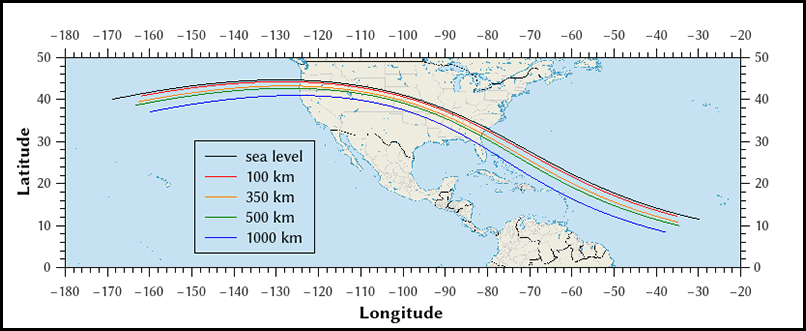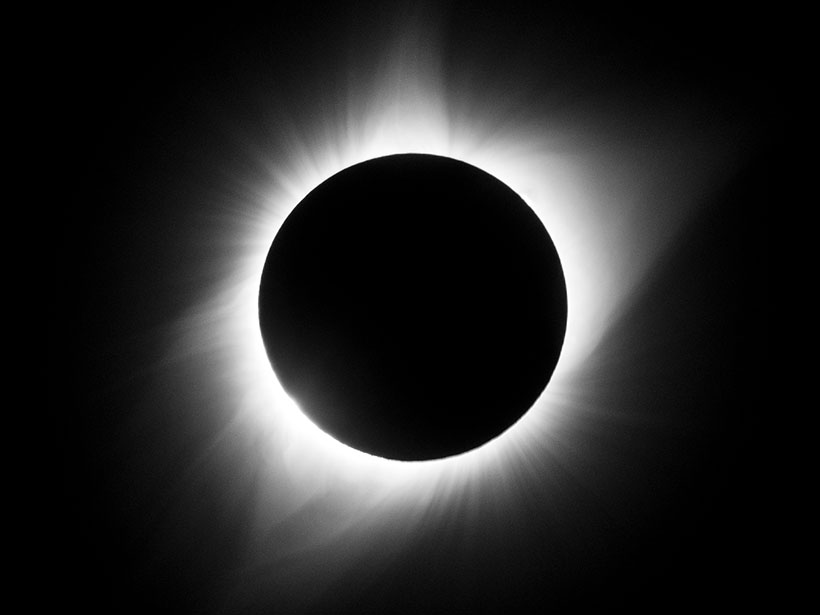Source: Journal of Geophysical Research: Space Physics
Solar eclipses have long been important astronomical events, especially for studying the Sun. For example, the only time the Sun’s outer atmosphere, called the corona, is directly visible from Earth is during an eclipse. Eclipse effects at Earth’s surface are widely known, but the events also affect the population of charged particles making up Earth’s ionosphere.
Measuring these effects requires a careful understanding of eclipse geometry. Although the classical equations describing this geometry at the surface have been well understood for more than a century, at the altitude of the ionosphere, calculations based on these equations can produce errors greater than several degrees in latitude or longitude. Verhulst and Stankov derive formulas that account for altitude and describe a software package incorporating these formulas for the popular Python programming language. In general, the size of the correction determined using their formulas grows as an observer moves toward the poles.

Aided by these equations, the authors investigate the depletion of ionized particles in the ionosphere during the eclipse that crossed much of the United States on 21 August 2017. One measure of ionization is total electron content (TEC), which describes the number of electrons found along a chosen line of sight. A common method of estimating TEC at Earth involves observing the delay in signals received from GPS satellites as their radio waves pass through the ionosphere.
During the August 2017 eclipse, TEC decreased by 25%–35% across the entire path of totality. The largest drop in ionized particles—of more than 50%—was seen over the Caribbean Sea. However, at most locations the time of maximum depletion lagged the passage of totality by 30 minutes or more. The researchers found that the path of the eclipse at higher altitudes better explains the depletions.
The authors also examine the altitude-dependent path of solar eclipses visible through 2025. And they note that some (total) eclipses are visible only from the ionosphere and not from the ground. Thus, there may be more opportunities than previously anticipated to refine our understanding of TEC depletion during these rare events. (Journal of Geophysical Research: Space Physics, https://doi.org/10.1029/2020JA028088, 2020)
—Morgan Rehnberg, Science Writer
Citation:
Rehnberg, M. (2020), Altitude matters for solar eclipse observations, Eos, 101, https://doi.org/10.1029/2020EO146992. Published on 23 July 2020.
Text © 2020. AGU. CC BY-NC-ND 3.0
Except where otherwise noted, images are subject to copyright. Any reuse without express permission from the copyright owner is prohibited.

